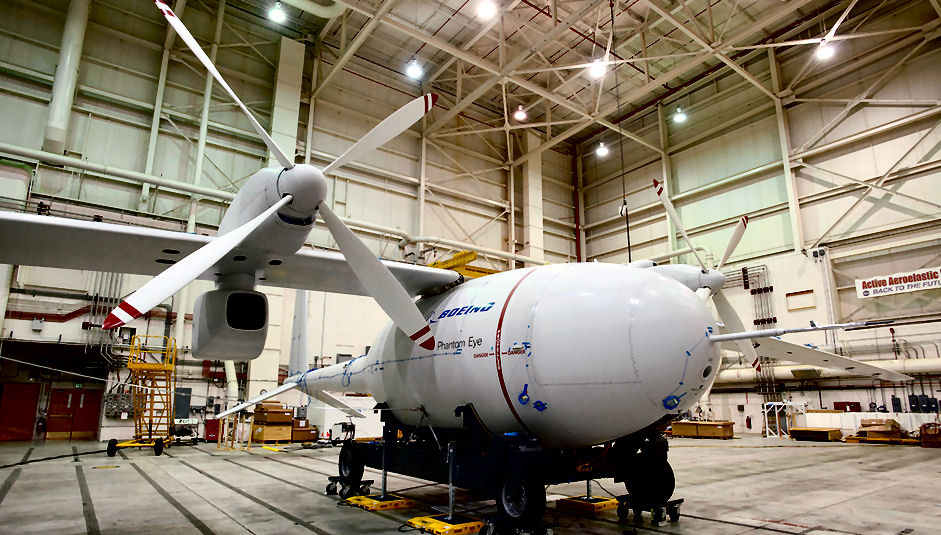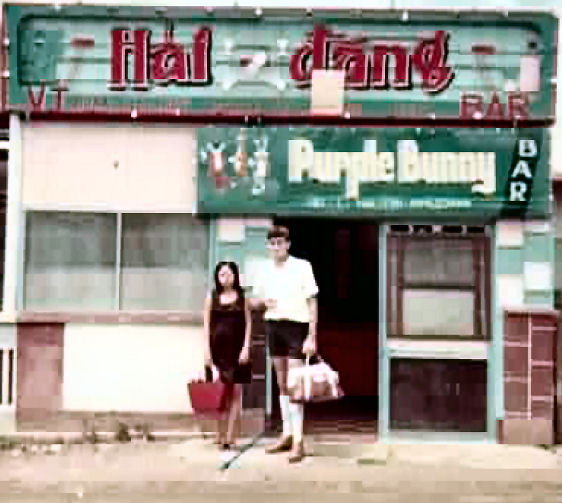|
|
||||||||||||||
|
Radschool Association Magazine - Vol 43 Page 8 |
||||||||||||||
|
Privacy Policy | Editorial Policy | Profit Policy | Join the Association | List of Members | Contact us | Index | Links |
||||||||||||||
|
Back Go to page: 1 2 3 4 5 6 7 8 9 10 11 12 13 14 15 16 17 18 19 20 Forward |
||||||||||||||
|
|
||||||||||||||
|
The People I meet!! |
||||||||||||||
|
|
||||||||||||||
|
Julia Fiege, Vaiana Buridan, Trev Benneworth, Monique Breen, Sarah Schulz. |
||||||||||||||
|
(Click the pic for a better view) |
||||||||||||||
|
Here I was, just strolling through
Surfers, minding my own business when I was rushed by these 4 beautiful
girls who demanded to have their photo taken with me – ah well, that’s
the price of being famous I suppose……
The Surfers Paradise Meter Maids were introduced in 1965 by Bernie Elsey (who also started the famous Pyjama Parties at the Beachcomber Hotel) to help beat the bad image created by the installation of parking meters on the tourist strip in December 1964. This was a controversial promotion, using young women dressed in gold lame bikinis and tiaras, who strolled the streets of Surfers Paradise feeding coins into expired parking meters and leaving a calling card under the windscreen wipers.
In 1967, the Gold Coast was battered by cyclonic seas smashing into the coastline, so the then Mayor, Sir Bruce Small, along with the Meter Maids, went on a campaign trail promoting the Gold Coast to Australia and getting people back to the beaches. Within weeks the idea had attracted national and worldwide publicity and the Meter Maids became the spearhead of many a promotional drive throughout Australia and New Zealand. This was one of the best known gimmicks and probably the best known Gold Coast promotion.
These days, gone are the out-dated tiaras, replaced by the sun-conscious and true Aussie Akubra hat ideal for Queensland’s tropical climate, while Gold Lycra Bikinis with the occasional sequin have replaced the traditional lame bikini and even the traditional form of financing the service has taken a new turn. In the past a weekly contribution of a few dollars was paid by each local business as part of their community service but in this commercially competitive era, sponsors are expecting public profile and positive media exposure in return for their dollar.
Now in their 49th year, the Meter Maids remain 'the face of Surfers Paradise'. In 2014 they celebrate their 50th year culminating in a golden anniversary party in April 2015. Despite six decades of constant change in Surfers Paradise the Meter Maids not only remain relevant, but have established themselves as a tourist favourite and expectation.
Today the girls supplement their income by selling themed stubby holders, calendars, beer coasters, posters etc, and love to have their photo taken with you – for a small charge. So! Next time you’re on the Coast, look out for the Maids, they would love to have a chat with you, and make sure you buy something from them.
|
||||||||||||||
|
75 Sqn, 1989. Tindal.
Alan Pedley gave us this pic, it was taken just after the first CO’s Parade.
|
||||||||||||||
|
|
||||||||||||||
|
|
||||||||||||||
|
An incident in Ubon. (This report was prepared by Lachlan Irvine and concerns a good friend from our 36 Sqn days who sadly took his own life some time ago as a result of dealings with DVA. This friend of ours was trying to get assistance from DVA but was continually refused. We’ve removed his name out of respect.)
On the nights of the 19th/20th of June 1962, the American LION radar team at Ubon had detected, on their radar screens, what they thought was possibly 20 low flying aircraft. They decided that the most likely explanation was that the Communist Pathet Lao were moving insurgents across the Thai border towards Ubon. Wing Commander Hubble, the Australian Commanding Officer at Ubon, ordered two Sabres, piloted by Flight Lieutenant Doug Johnston and Flying Officer Cliff Viertel, to take off and intercept the perceived threat. Hubble also ordered the ground crew to be issued with weapons and ammunition, to dig weapon pits and prepare to defend the base.
The incident turned out to be a false alarm, and the radar blips were never adequately explained.
The Ubon incident has been well reported and is a lasting memory for all who experienced it. It is recorded in the logs of the two Australian Sabre pilots. It is recorded in the history sheets of 20 Squadron, Royal Air Force, based at Chieng Mai, who remained on alert even after the Australians had returned to normal routine and it is reported in Chris Coulthard-Clark’s history of the RAAF in the Vietnam War. Eyewitness accounts have also been written for RAAF journals, by Cliff Viertel, and by a ground crew veteran, Stanley Curran.
With so many accounts of the incident available to any competent researcher, how could John Tilbrook of Writeway Research, possibly claim that it did not happen? The answer appears to be that Tilbrook broke some of the most basic rules of historical research. He chose to look at only a single source, and sought no corroboration. He then deduced a false conclusion from his flawed research. In his report, Tilbrook cites only Wing Commander Hubble’s daily log. The log is apparently filled with mundane details of life at Ubon, such as recreational activities and the need to order more tent-poles. A trained historian may be alerted by this trivia to the possibility that this daily log might not be the best place to search for operational orders. This does not seem to have occurred to Tilbrook. Instead, he reported the logical absurdity that its absence from this daily log was proof that the incident did not happen.
In fact, the order to scramble the Sabres and prepare to defend the base was sent as an “Ops Flash” message, classified secret. It was sent to the Air Officer Commanding (AOC) in Bangkok, to RAAF Butterworth, and to the Defence Department in Canberra. This was the normal chain of communication for an order of this kind. Tilbrook chose not to look for this communication. He also appears to have made a decision not to contact any veteran who had been at Ubon in June 1962. He appears to have decided not to search for any other document that may have reported the incident. He clearly decided not to consult Chris Coulthard-Clark’s history. It is clear that he also chose not to use the Internet to search for information.
Cliff Viertel discussed his own written account of the Ubon incident, and the account written by Stan Curran. Viertel explained why he was so certain of the details of the incident:
“I am very sure as it is in my logbook and I also have a copy of the 20 Squadron RAF History Sheet (Chieng Mai) recording the call to armed alert from Bangkok.”
It does not seem to have occurred to Tilbrook to check these sources.
Cliff Viertel’s account of the incident confirms that the ground crew had been issued weapons and placed on alert:
“The RAF Hunter Squadron in Chieng Mai and all USAF and US Marine Squadrons were ordered to place two aircraft on 5-minute alert and two more on 30-minute readiness from first light until further notice.
The Australian Commander sent ‘Ops Flash’ messages, (classified Secret) to Canberra and Butterworth through the AOC channels in Bangkok, notifying them of the threat and reluctantly issued arms and ammunition to all personnel late on the evening of June 19. Slit trenches were dug around the camp and aircraft dispersal areas and were manned by armed personnel before dawn.
Two Sabres, armed with 30mm HE ammunition, took off at dawn and were vectored right on to several target areas but could see little. Australia’s Rules of Engagement (borrowed from the USAF, as Aust were still waiting for the official Rules of Engagement from Canberra, which did not arrive until late July) permitted us to fire only if fired on. I flew the mission as No 2 to Flt. Lt. Doug Johnston. We expected to be fired on if insurgents were present and our armament switches were on, ready to return fire. We could see the treetops along the roads and could see that the patchy cloud base was about 200 feet. There was little horizontal visibility due to shallow raised fog layers. The section leader decided to drop below the cloud patches, where adequate forward visibility with the low angle rising sun showed that the road and surrounding relatively open area was clear. ‘LION’ Control was advised and we returned to base after a 40-minute flight.
Our commander, Wing Commander John Hubble was convinced that it was a false alarm, but AOC Bangkok did not call off the general alert and aircraft readiness for several days. RAF records show that No 20 Squadron RAF remained with two armed Hunters on 5-minute alert and two more on 1-hour alert until June 22.”
|
||||||||||||||
|
It's not an optical illusion. It just looks like one.
|
||||||||||||||
|
|
||||||||||||||
|
|
||||||||||||||
|
Stan Curran also backs up such small details as the softness of the soil at Ubon. The AAT transcript quotes them as saying that it did not take long to dig the trenches because the ground was very soft. Stan Curran says:
“The all clear was given and we went back to base camp for breakfast. When we arrived there the camp was an amazing sight. There were slit trenches everywhere with armed men in them. The guys at base really must have worked hard even though the soil was fairly sandy.”
Curran’s account, written from memory, begins as he is woken by the Commanding Officer with the words: "It's the C.O. here. We have an emergency. There are forty slow flying aircraft approaching."
Cliff Viertel recalls that, in addition to being a fighter pilot, he was also the Adjutant at Ubon. He remembers discussions with Wing Commander Hubble. While willing to scramble the Sabres, Hubble had been convinced that the incident would turn out to be a false alarm and was therefore reluctant to issue the order to arm the ground crew and prepare to defend the base. He eventually decided to play it safe and issue the order. The fact that he had always been confident the incident would turn out to be a false alarm might explain why the report in his daily log mentions the scrambling of the Sabres but not the arming of the ground crew.
Another listing in Wing
Commander Hubble’s log suggests a further possible reason that the base
commander may have wanted to play down the seriousness of the Ubon
incident.
Cliff Viertel's role as adjutant sheds further light on the question of Tilbrook’s assertion that the absence of a report of an incident in a single document is evidence that the incident did not happen. Viertel recalls that, as adjutant, he wrote daily reports in quadruplicate on a typewriter, using carbon paper. Years later, he was conducting research for his own history of 79 Squadron’s time at Ubon. He checked the archives and could not find a single copy of any of his daily reports. Does that mean that none of the incidents about which he wrote in his reports actually happened? The suggestion is logically absurd.
So much evidence was freely available in this case that it is impossible to avoid the conclusion that the decision not to look for it was deliberate. Tilbrook is paid to produce results for the DVA. On the 3rd of March 2000, the DVA issued Departmental Instruction number C12/2000, Researchers for Historical and Factual Information. This document includes guidelines that the Department’s contracted researchers must follow. One of its instructions states:
The report should be factual and non-judgemental.
The AAT transcript of the case indicates that John Tilbrook of Writeway Research breached this guideline on a number of occasions. Tilbrook’s report suggests that the RAAF went to Ubon merely to conduct exercises. He also expresses the opinion that “boredom, tedium and isolation” were the biggest issues facing the RAAF at Ubon. This is not factual, it is only Tilbrook’s opinion.
By
contrast, the RAAF Museum’s website states that:
Reforming in 1962, 79 Squadron proceeded to Ubon, Thailand, where it was to help resist an expected invasion of Thailand by North Vietnamese forces. Although no attack eventuated, the squadron’s Sabres were kept fully armed, maintaining a state of constant operational readiness.
The Air War Vietnam website says:
In 1962, as a response to a threat to Thailand from across the Laotian border, four member nations of SEATO, the United States, Britain, New Zealand and Australia, sent armed units to create a holding force to Thailand, These units were intended to withstand any initial attack until full scale reinforcements could be sent.
It is easy to see how language can be manipulated to create a desired impression in a reader when a researcher fails to be factual and non-judgemental. Tilbrook claims that the RAAF at Ubon was conducting exercises amid an atmosphere of boredom and tedium. Those who were actually at Ubon claim that they were there to resist an expected invasion and withstand an initial attack until reinforcements could be sent. This use of slanted language by Tilbrook is a clear breach of the DVA guidelines.
The AAT transcript reveals that Tilbrook expressed the opinion that the account of the Ubon incident in Chris Coulthard-Clark’s official history was uncorroborated. Again, Tilbrook is in breach of the Department’s instructions. This is not factual; it is only Tilbrook’s opinion. It is also false, and it demonstrates that Tilbrook lacks understanding of one of the most basic, yet important, concepts of historical research.
Coulthard-Clark’s account of the Ubon incident was obtained from the two pilots who were scrambled to intercept the perceived threat. It is corroborated by their pilot’s logs. Three eyewitness accounts of the incident are given in the person’s case: those of that person and the two pilots. They all agree. That is one hundred percent of the eyewitness accounts, backed up by documentary evidence in the form of the pilots’ logs. That is exactly what corroboration means. The only uncorroborated evidence presented at the AAT is Tilbrook’s report, which cites one source only. Tilbrook did not seek any corroboration from any other source. This failure of Tilbrook to understand the meaning of corroboration is quite disturbing, and raises considerable doubt about the Department’s continuing use of his dubious research skills.
When Tilbrook’s report was received at the DVA, somebody surely noticed that it actually contained no evidence that the Applicant’s account of the Ubon incident was wrong. Absence of proof is not proof of absence. It is, therefore, arguable that the Department went ahead with this case knowing it had no evidence that would disprove the Applicant’s case to the standard of proof required by the Veterans Entitlements Act. In doing so, the Department was in breach of its obligations under Section 119 of the Veterans Entitlements Act.
The Act states that the Department:
The
Department failed to take into account logical reasons for the absence
of the Ubon incident from Wing Commander Hubble’s log; reasons that
perfectly fit the description in Section 119. Further, it went to the
AAT with an argument that it knew to be false: that the absence of a
record of the Ubon incident in a single document was evidence that the
incident did not occur as described by the applicant and the two pilots.
By proceeding with an argument known to be false, the Department failed
to act according to substantial justice and the substantial merits of
the case.
The AAT and the Applicants Case.
While the AAT eventually found in the Applicant’s favour, it failed to ask a number of pertinent questions about Tilbrook’s report.
Since Tilbrook was not an eyewitness to the Ubon incident, and since he was not presenting any evidence that could disprove the Applicant’s version of events (again, at the risk of being repetitive, the AAT members know that absence of proof is not proof of absence, and are well aware of Section 119 of the VEA), and since all he was doing was presenting his opinions, the AAT was entitled to ask what standing Tilbrook, and his opinions, had in this case.
In a similar case, Anderson and Repatriation Commission (AATA 383, 1983), the veteran produced statements from eye-witnesses, while Tilbrook provided only his own opinions, and the lack of an official record of the incident described by the veteran. The AAT correctly ruled in that case that Tilbrook’s evidence was of no merit, and accepted the fallibility of record-keeping in wartime.
In another similar case, coincidentally also from 2003 and also titled Anderson and Repatriation Commission, but this time numbered AATA 292, the veteran provided eye-witness reports, while Writeway Research offered the opinion of one of its researchers, Colonel Church, that the incident was unlikely to have happened as described by the veteran. The AAT correctly pointed out that its responsibility was to apply the provisions of Section 119, and accept that the absence of an official record is not proof that an incident did not occur.
In the Applicant’s case, the AAT did not mention Section 119 in relation to the Writeway Research report, although it did accept that it could not be convinced beyond reasonable doubt by the absence of a report of the incident. It is unfortunate, however, that the Tribunal made several references to the opinion of John Tilbrook without ever pointing out that those opinions have no standing in this case.
Conclusion.
On the evidence of the Applicant’s case, I am drawn to the conclusion that Writeway personnel are unqualified for the research work for which the DVA has generously paid them. They lack competence in the field of historical research, and they appear to lack any understanding of the concept of professional ethics. I have studied many other cases, using AAT transcripts, and they confirm these conclusions.
|
||||||||||||||
|
Robyn and Bob Dickson.
Robyn Dickson (nee MacLennan), who was from Longreach, (Qld) was a WRAAF
Robyn’s job was to sometimes drive the base taxi (a combi van) around the base. Point Cook was a large diversified base with bits everywhere. People would ring the transport office and request to be picked up from somewhere and dropped off somewhere else. One day she got a request from someone to be picked up from the range on the base, but the range people had not put up the red flag so she drove the top road which went between shooter and target – she was very lucky not to have been shot.
On another occasion, she was taken to 1SD at Tottenham to pick up a new vehicle. She drove the vehicle up to Transport Section, then while in the office completing the paperwork she heard a huge crash and after running outside found that a large truck has backed into the new vehicle, nearly demolishing it. It was, she said, embarrassing to have to ring Pt Cook and asked to be picked up again.
Back then, before it was moved to Amberley, the fire school was at Pt Cook and it was there that she met Bob Dickson who was on a course learning to be a firey. They started going out and eventually they became engaged but then Bob was posted to Williamtown. Robyn tried to get a compassionate posting but it was continuously refused so after 12 months she decided to take a discharge. She then moved to Raymond Terrace, married Bob and stayed there for 3 years. In July 1979, Bob was posted to Townsville where he got his second hook, then in Jan 1984 he was posted to Canberra. In May 1986, it was pack the bags again and down to Laverton, then in April 1989 he got his third hook and home became East Sale then it was off to Amberley in Jan 90, then Townsville in 1991 then back to Amberley in 1994 as a sergeant instructor at the fire school.
At the school he was promoted to F/Sgt then it was over to Pearce in 1996 then back east to Combat Support Group (CSG) at Glenbrook in 1999 as a W/O. In 2000 the CSG was moved to Amberley so it was another posting and he stayed there until 2003, most of the time as CMC of the Sergeant’s Mess. In 2003, he was sick of moving and decided it was time for a change so he retired - he had spent 28 years in the RAAF. Prior to his RAAF career, Bob had done 9 years in the Navy as a stoker and was onboard HMAS Hobart when it was ‘bombed’ by the US (17th June, 1968).
In January 2012, Bob passed away after losing a battle with bowel cancer which he had been suffering for about 18 months. He was only 63 years old and was awarded the honour of having his casket draped with the ensign which was presented to Robyn after the Service.
Robyn still lives in the Ipswich area but she is considering a move to the Sunshine Coast. She has since gone back to “school” and is now studying for a diploma in counseling. She intends to continue with the books until she gains a degree. She has 5 children, 4 of whom live in and around the Ipswich area, the other in Sydney, and 10 grandchildren – Christmas Day is very busy at the Dickson household.
|
||||||||||||||
|
Teacher: If I gave you 2 cats and another 2 cats and another 2, how many will you have? Johnny: Seven Teacher: No, listen carefully... If I gave you 2 cats, and another 2 cats and another 2, how many will you have? Johnny: Seven. Teacher: Let me put it to you differently. If I gave you 2 apples, and another 2 apples and another 2, how many would you have? Johnny: Six. Teacher: Good. Now if I gave you 2 cats, and another 2 cats and another 2, how many would you have? Johnny: Seven!!! A very angry Teacher: Where do you get seven from?!?!? A very angry Johnny: I've already got a cat!!!
|
||||||||||||||
|
Canberra 307
A84-307 was the first Canberra to see service with
the RAAF. It was assigned to the Aircraft Research and Development Unit
(ARDU) where it undertook many high altitude high speed test flights
over a 5 year period. The first Canberra built in Australia was A84-301
and it is now on display at Amberley.
The tests were designed to give the RAAF its first understanding of high altitude airframes and jet engine design.
Today, the aircraft is being restored at the Vietnam Veterans Museum on Philip Island (Vic)
|
||||||||||||||
|
An elderly lady said to her friend, “After directory assistance gave me my boyfriend's new telephone number, I dialled him -- and got a woman. "Is Mike there?" I asked confused. "Umm, he's in the shower," she responded. "Would you please tell him his girlfriend called," I said and immediately hung up. When he didn't return the call, I angrily dialled again. This time a man answered. "This is Mike," he said. "Oh I’m sorry” I said, “wrong number you’re not my boyfriend” "Lady, I know that," he replied. "That's what I've been trying to tell my wife for the past half-hour."
|
||||||||||||||
|
Boeing’s Phantom Eye.
The Phantom Eye is a liquid-hydrogen powered high altitude long endurance (HALE) unmanned aircraft system (UAS) which is designed to be used for persistent intelligence, surveillance, reconnaissance and communications. It is a propeller driven lightweight structure with a high aspect ratio wing (ratio of its length to its breadth).
.
Launched in 2009, it flies at 65,000 ft for up to 4 days and amazingly is powered by two Ford Ranger four cylinder engines converted to run on hydrogen.
You can see it HERE.
The way things are going, wars aren’t going to need people any more, wars will be fought out between machines, while people just sit at home and watch it all on 3D TV.
|
||||||||||||||
|
We have learnt from experience that some men never learn anything from experience.
|
||||||||||||||
|
A WW2 story.
Nearly
everyone likes a story about World War 2, but it’s probably more of a blokey
thing
Rob Meyer, a clock winder (right, partaking of a refreshing ale in Vung Tau many moons ago) and who has taken up abode in Tassie within sight of snow covered Mt Wellington, had an uncle Fred (Fred Manger) who married his aunty Nan and who was in the RAAF during the War. Uncle Fred was flying a Sunderland when it flipped upside down and had to be set right again.
It’s a good story and you can read it HERE
|
||||||||||||||
|
When your wife says “We need to talk” it doesn’t mean WE need to talk, it means YOU need to sit and listen to all the ways you’ve been stuffing up. That’s what it means.
|
||||||||||||||
|
Back Go to page: 1 2 3 4 5 6 7 8 9 10 11 12 13 14 15 16 17 18 19 20 Forward |
||||||||||||||
|
|
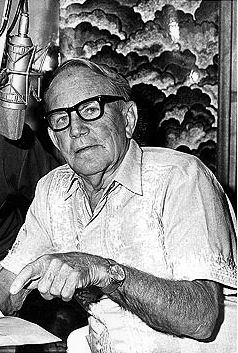
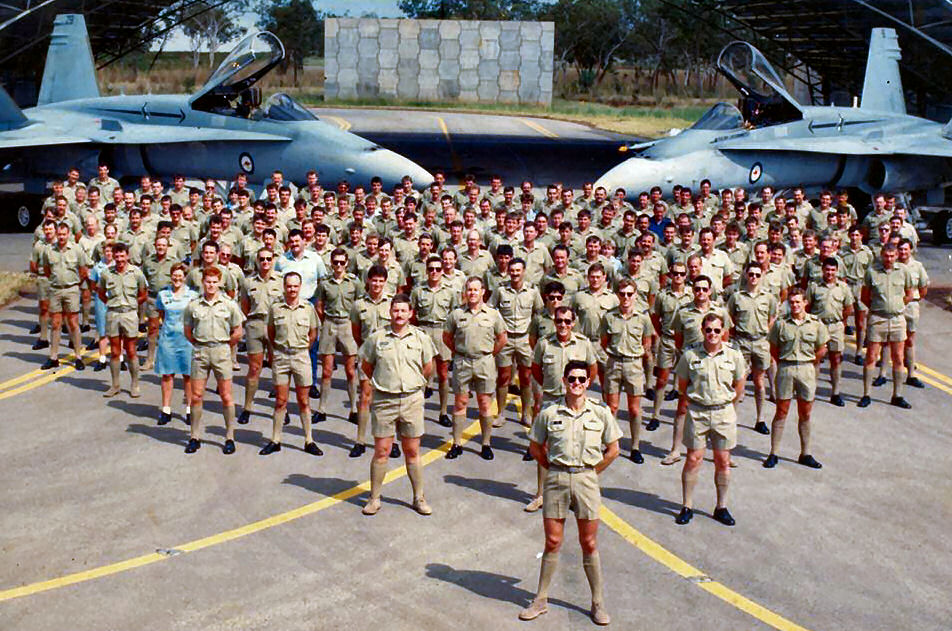
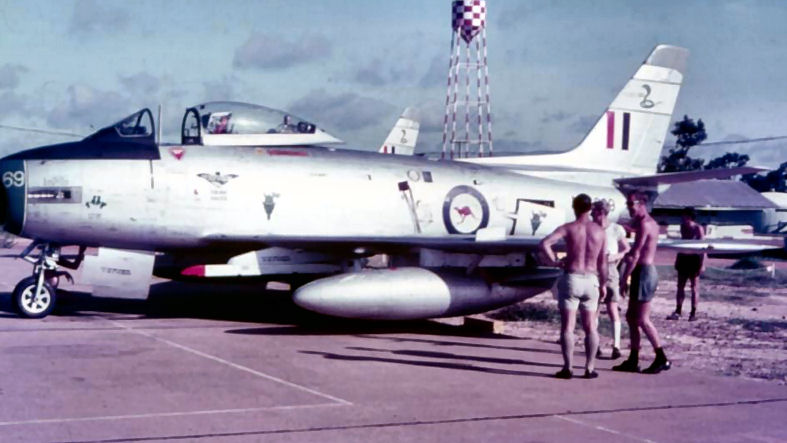

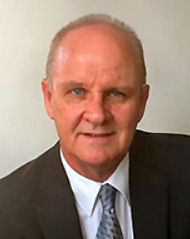

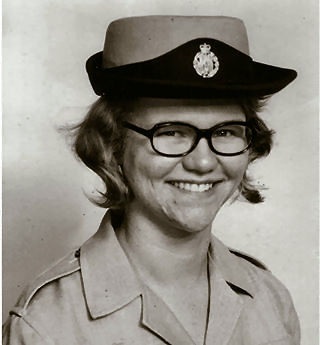 Transport
Driver at Point Cook, back in 1974. Robyn joined the WRAAF in 1973 and
after Rookies was posted to Point Cook where she stayed until January
1976 when she discharged due to marriage.
Transport
Driver at Point Cook, back in 1974. Robyn joined the WRAAF in 1973 and
after Rookies was posted to Point Cook where she stayed until January
1976 when she discharged due to marriage. 
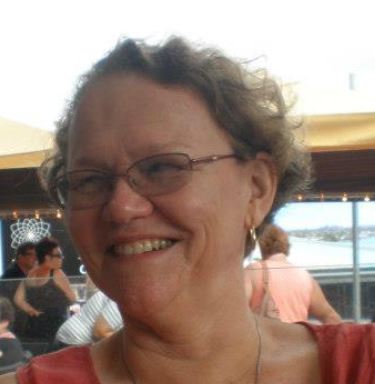
.jpg)
